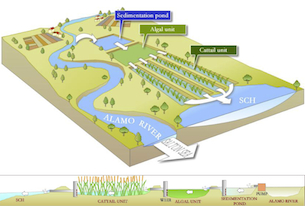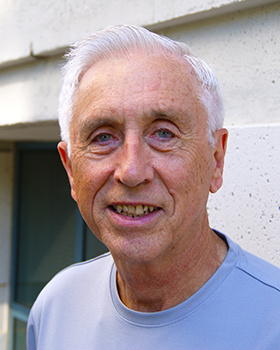Professor Norman Terry proposes efficient, new way to remove selenium

The study was aimed at providing a wildlife habitat at the south end of the sea with low-salt, clean water, but the new wetland design also has the potential for broader environmental and agricultural applications, researchers say.
Previous attempts to use constructed wetlands for cleansing selenium from water were only able to reduce selenium in the outflow to about 5 or 6 parts per billion, not low enough to mitigate the negative environmental effects of the contaminants, scientists say. The new wetland design reduced selenium in the water column to extremely low levels, less even than 1 part per billion, the study found.
“No other published studies have shown any cost-effective system that approaches this level of efficient selenium removal,” said Norman Terry, a professor of plant and microbial biology at the University of California, Berkeley, and principal investigator of the study. “The only other way to get water this clean is to use microbial bioreactors, which are prohibitively expensive and not feasible on the vast scale of the Salton Sea.”
The study, published in the November 6 issue of Environmental Science and Technology, was funded as part of the California Department of Fish and Game's and Department of Water Resources’ efforts to develop pilot restoration projects that provide feeding habitat for migratory, fish-eating birds. It is this habitat that is most immediately at risk as the sea’s salinity begins an expected rapid rise after 2017, the agencies say. The Salton Sea is home to more than 400 species of resident and migrating birds, including several endangered species, and is an important stop on the Pacific flyway, the north-south path for migrating birds in North America.
The Technology
In the proposed multi-step process, water from the Alamo or New River would be pumped into a sedimentation pond, and then allowed to flow through an algae pond and into a constructed wetland growing cattail plants before it finally enters into the species conservation habitat.
“The key to using wetlands for selenium removal is not the living cattails, but the dead cattails that sit atop the sediments,” Terry said. “There are microbes that live on the surface of the fallen litter and trap the selenium as it flows by, metabolizing it either into a non-toxic gas for dispersal into the atmosphere or into non-bioavailable selenium that remains trapped in the sediments.”
The new design developed by the Terry lab also incorporates an algae pond to remove selenium and fertilizer nutrients—nitrogen, phosphorus and other contaminants. These contaminants are collected by the rapidly growing algae, which double their biomass every 24 hours. The algae are extremely efficient in removing and gasifying the selenium, completely eliminating it from the ecosystem. In addition, researchers say the algae, which contain as much as 50 percent oil, could also be harvested and sold for biofuel—providing a potential source of income for the restoration project.
Cleaning Agricultural Run-off
The next step for the project is to build a pilot wetland so researchers can test the design in the field.
 “If the pilot program is successful in supplying clean water to support the species conservation habitat, this cost-effective process could be applied to the Salton Sea itself, and to other sensitive environments,” Terry said. “You might call it a down payment. If we can prove this design is an effective way to get the water clean enough to restore these natural environments, then technology has the potential to solve many of California’s water problems.”
“If the pilot program is successful in supplying clean water to support the species conservation habitat, this cost-effective process could be applied to the Salton Sea itself, and to other sensitive environments,” Terry said. “You might call it a down payment. If we can prove this design is an effective way to get the water clean enough to restore these natural environments, then technology has the potential to solve many of California’s water problems.”
For example, constructed wetland water treatment systems could provide an alternative to evaporation ponds, which are the only option currently available for preventing selenium, pesticides and fertilizers from contaminating water bodies. Billions of gallons of drain water could then be recycled to irrigate moderately salt-tolerant California crops instead of being wasted in evaporation ponds, Terry said.
Located 45 miles southeast of Palm Springs, Calif., the Salton Sea was formed in 1905 by flooding from the Colorado River. The sea is 35 miles long by 10-15 miles wide, with an average depth of 50 feet. The sea’s declining water level and increased salinity are already causing an array of environmental and public health hazards, including the decline of bird and fish habitats; poor air quality due to an increase in toxic dust containing selenium, heavy metals and other contaminants; drainage water contaminated with fertilizers, pesticides, pathogens, suspended solids and selenium; noxious smells; annual bird die-offs; and a potential collapse of the fishery.
The Species Conservation Habitat Project is part of the state’s “phased approach to ecosystems restoration in the Salton Sea,” and will provide a range of aquatic habitats that will support dependent fish and wildlife species there.
